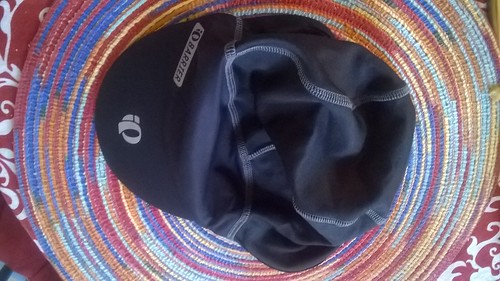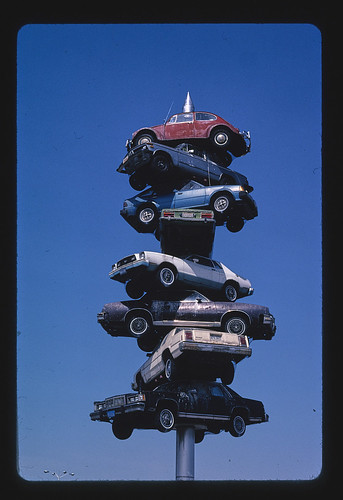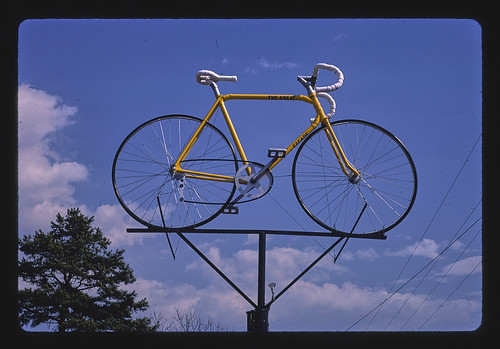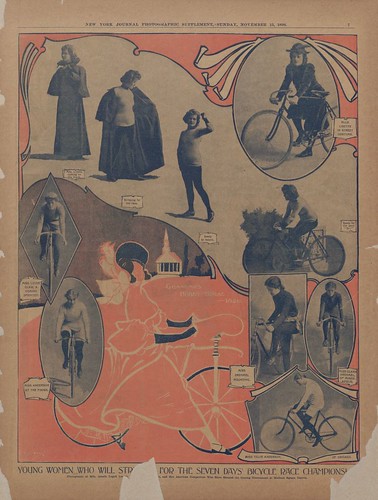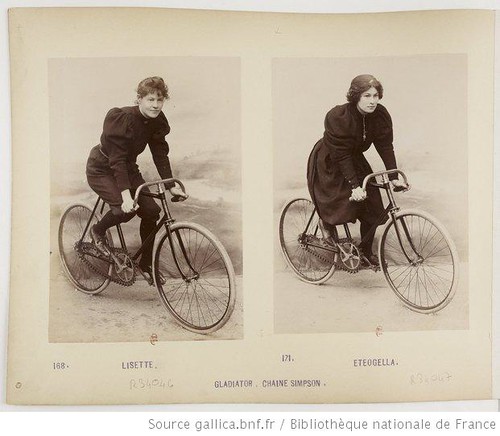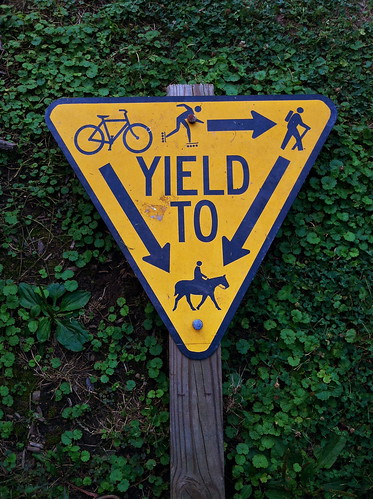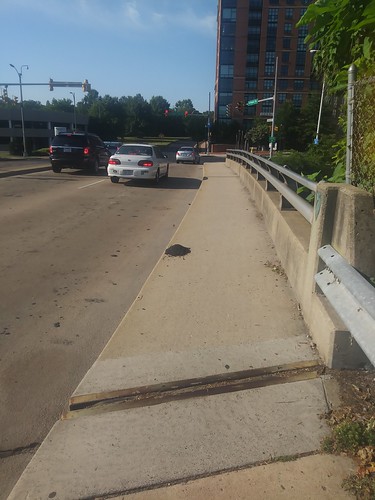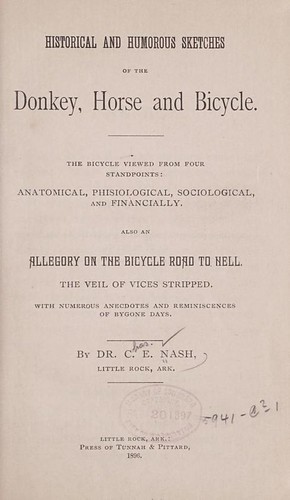
Historical and humorous sketches of the donkey, horse and bicycle. The bicycle viewed from four standpoints: anatomical, phisiological [!], sociological, and financially. Also an allegory on the bicycle road to hell
What a title page!
HISTORICAL AND HUMOROUS SKETCHES
OF THE
DONKEY, HORSE AND BICYCLE.
THE BICYCLE VIEWED FROM FOUR STANDPOINTS :
ANATOMICAL, PHISIOLOGICAL, SOCIOLOGICAL,
AND FINANCIALLY.
ALSO AN ALLEGORY ON THE BICYCLE ROAD TO HELL.
THE VEIL OF VICES STRIPPED.
WITH NUMEROUS ANECDOTES AND REMINISCENCES
OF BYGONE DAYS.
By Dr. C: E. NASH,
LITTLE ROCK, ARK.
Dr. Nash published this book himself. He also made sure it was deposited for copyright registration at the Library of Congress. What was he trying to do with this book?
We would not undertake to say but that some of the purest and best class, of women are riding bicycles ; some of the most cultured and refined ladies are indulging in what they consider a refining exercise. Their endorsement has led to untold liberties, their sanction to immoralities of which they are ignorant. A sanction of an evil by the good gives double force to the evil. The motive for writing this book is to try to improve the morals and manners of those who stand in the way of good manners and right living, not by a progressive but a retrogressive movement.Oh. Well.
The guy is a bigot, and he attacks more than cyclists. Not particularly humorous - pretty nasty. Ugh!
